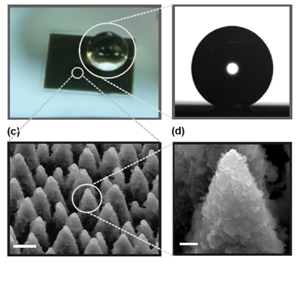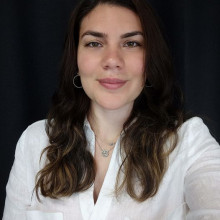The Functional Polymer Nanostructures group aims at developing functional nanostructured materials, which possess specifically designed properties and tuning capabilities. The group focuses on understanding the relationship between microstructure-dynamics-properties of polymeric and hybrid materials, and on optimizing properties and designing novel advanced and functional materials.
The main activities include the investigation of: the morphology and dynamics of multi-constituent polymers (including polymer mixtures, block copolymers, homopolymer / copolymer mixtures, star and hyperbranched polymers) in bulk and in restricted geometries; the study of polymer surfaces, interfaces and thin films and the development of polymer coatings; the investigation of functional and responsive polymer materials and material surfaces; the study of polymer nanocomposites; the development of nanoparticulate catalysts for the chemical industry as well as the development of polymeric materials for applications in the field of energy. The investigation involves the design of the functional materials, the characterization of the structure, chain conformations and the dynamics in the melt, in solution and close to surfaces or under severe confinement as well as the study of the thermal, surface, mechanical, rheological, optical, optoelectronic and magnetic properties and their response to selected external stimuli. Such systems target specific applications ranging from every day commodity products, to greenhouse films in agriculture, to coatings-paints and adhesives for the automotive and aerospace industries as well as polymer electrolytes for batteries.
Research Topics
The Functional Polymer Nanostructures group aims at developing functional nanostructured materials, which possess specifically designed properties and tuning capabilities. The group focuses on understanding the relationship between microstructure-dynamics-properties of polymeric and hybrid materials, and on optimizing properties and designing novel advanced and functional materials.
The main activities include the investigation of: the morphology and dynamics of multi-constituent polymers (including polymer mixtures, block copolymers, homopolymer / copolymer mixtures, star and hyperbranched polymers) in bulk and in restricted geometries; the study of polymer surfaces, interfaces and thin films and the development of polymer coatings; the investigation of functional and responsive polymer materials and material surfaces; the study of polymer nanocomposites; the development of nanoparticulate catalysts for the chemical industry as well as the development of polymeric materials for applications in the field of energy. The investigation involves the design of the functional materials, the characterization of the structure, chain conformations and the dynamics in the melt, in solution and close to surfaces or under severe confinement as well as the study of the thermal, surface, mechanical, rheological, optical, optoelectronic and magnetic properties and their response to selected external stimuli. Such systems target specific applications ranging from every day commodity products, to greenhouse films in agriculture, to coatings-paints and adhesives for the automotive and aerospace industries as well as polymer electrolytes for batteries.
The Materials Synthesis Laboratory (MSL) has extensive experience on the synthesis, characterization and applications of polymeric and organic/inorganic hybrid materials, polymer colloids, “smart” stimuli-responsive materials, water-soluble/amphiphilic polymers, biologically active (co)polymers, supramolecular assemblies, micellar nanostructures, polyelectrolytes/polyampholytes, microgels/hydrogels and the modification of flat and curved surfaces. The group has extensive experience on “living” and controlled polymerization techniques such as, Group-Transfer Polymerization, Atom Transfer Radical Polymerization (ATRP) and Reversible Addition Fragmentation Chain-Transfer (RAFT), to prepare polymers of controlled macromolecular characteristics (i.e. molecular weight, and molecular weight distribution, composition and architecture). MSL is an internationally-renowned group in the field of multi-responsive and biocompatible/biodegradable polymers for biomedical applications such as targeted and controlled drug delivery, gene therapy and tissue engineering.





















